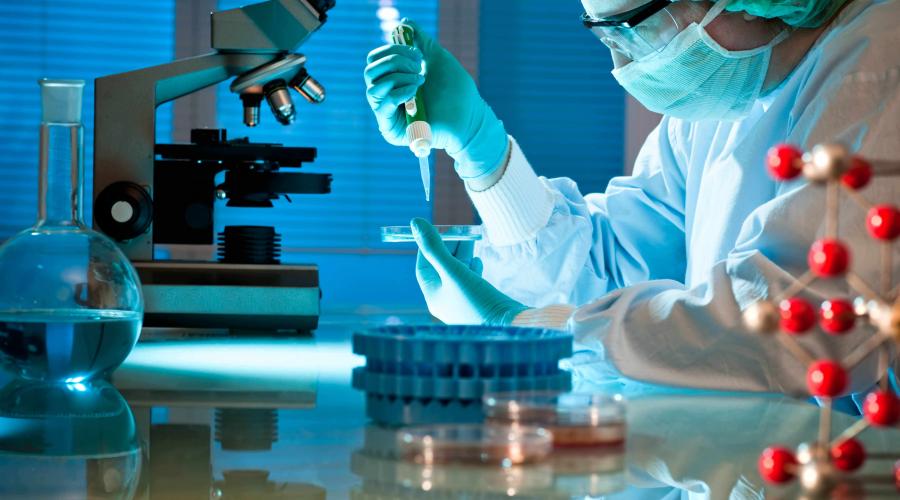
A significant increase in Research and Development (R&D) expenditure in Greece was recorded over the decade 2007-2017 according to the statistics recently published by Eurostat, the EU's statistical service. In 2017, R&D expenditure was 1.13% of GDP, almost double the 0,58% in 2007. Despite the significant increase, this performance still lagged behind the European average (2.07%), and, in 2017, put Greece in 18th place in the European Union.
Research and Development is a driving force behind innovation, that is why both R&D expenditure and R&D Intensity are indicators for monitoring resources allocated to science and technology worldwide.
According to Eurostat, in 2017, EU member states spent a total of 320 billion euros on R&D. The R&D Intensity indicator, representing R&D expenditure as a percentage of GDP, rose from 2.04% in 2016 to 2.07% in 2017. Ten years earlier, in 2007, the percentage was 1.77.
The EU R&D Intensity indicator was quite a lot lower than that of South Korea (4.22% in 2015), Japan (3.28% in 2015), the USA (2.76% in 2015), but was level with that of China (2.06% in 2015) and higher than Russia (1.1% in 2015) and Turkey (0.96% in 2015). Since the goal over the coming years is to strengthen EU competitiveness, increasing the R&D Intensity indicator to 3% by 2020, it constitutes one of the 5 priorities of EU strategy.
The business sector continues to make the largest contribution to European R&D expenditure, with a share of 66% in 2017, and is followed by higher education (22%), the government sector (11%) and the private non-profit sector (1%).
R&D Intensity indicator over 3% in Sweden,Austria, Denmark and Germany
In 2017, the highest R&D Intensity indicators recorded were for Sweden (3.33%) and Austria (3.16%), followed by Denmark (3.06%) and Germany (3.02%), all had R&D expenditure higher than 3% of GDP.
Finland (2.76%), Belgium (2.58%) and France (2.25%) had R&D expenditure between 2% and 3% of GDP. By contrast, eight member states recorded R&D expenditure below 1%: Rumania (0.5%), Latvia (0.53%), Malta (o.55%), Cyprus (0.56%), Bulgaria (0.75%), Croatia (0.86%), Lithuania and Slovakia (0.88%).
Over the previous decade, the R&D Intensity indicator rose in 21 member states. With an increase of 0.55 percentage points, Greece is among the countries with the highest growth. The biggest increase (0.74 percentage points) was recorded in Austria (from 2.42% in 2007 to 3.16% in 2017) and Belgium (from 1.84% in 2007 to 2.58% in 2017), followed by Germany with an increase of 0.57 percentage points (from 2.45% in 2007 to 3.02% in 2017) and in 4th place Greece, with an increase of 0.55 percentage points. In contrast, the R&D Intensity indicator decreased in 6 member countries especially in Finland (-0.59 points) and Luxembourg (-0.33 points).

Source: Eurostat
Higher percentage of expenditure on R&D in the business sector in Slovenia and Hungary
In 2017, the main sector with R&D expenditure was the business sector in all member states except for Cyprus and Latvia (where the main sector was higher education) and Lithuania (where expenditure in the higher education sector equalled that of the business sector).
The highest percentages for R&D expenditure in the business sector were recorded for Slovenia (75%), Hungary (73%), Ireland and Sweden (71%), Bulgaria and Austria (70%), Germany (69%), Belgium and the UK (68%). The highest percentages for expenditure in the government sector were in Rumania (32%), Lithuania (28%), Luxembourg and Latvia (26%). The highest percentages for expenditure in the higher education sector were Latvia (47%), Portugal (43%), Cyprus (42%) and Estonia (40%).
Increase in expenditure in Greece over the 2007-2017 period
A significant increase in R&D expenditure as a percentage of GDP was recorded for Greece over the decade 2007-2017. However, it still lagged behind the EU average of 2.07%.
More specifically, as a percentage of GDP, R&D expenditure came to 1.13% in 2017, from 0.58% in 2007. In absolute terms, 2007 expenditure came to 1,342 million euros, while in 2017 it was 2,033 million euros.
It is worth mentioning that the business sector contributes the most towards this with R&D annual expenditure of 49% in 2017 compared to 29% in 2007. It is followed by the higher education sector (28%), the government sector (22%) and the private non-profit sector (1%).
R&D expenditure data for Greece are published and transmitted to Eurostat by the National Documentation Centre (EKT). The indicators are incorporated regularly into the official statistics for Research, Development and Innovation in Greece, which is realised by EKT as an agency and national authority of the Hellenic Statistical System, in co-operation with the Hellenic Statistical Authority.
Data analysis and relevant indicators are published in EKT's printed and electronic publications and can be found at http://metrics.ekt.gr.







